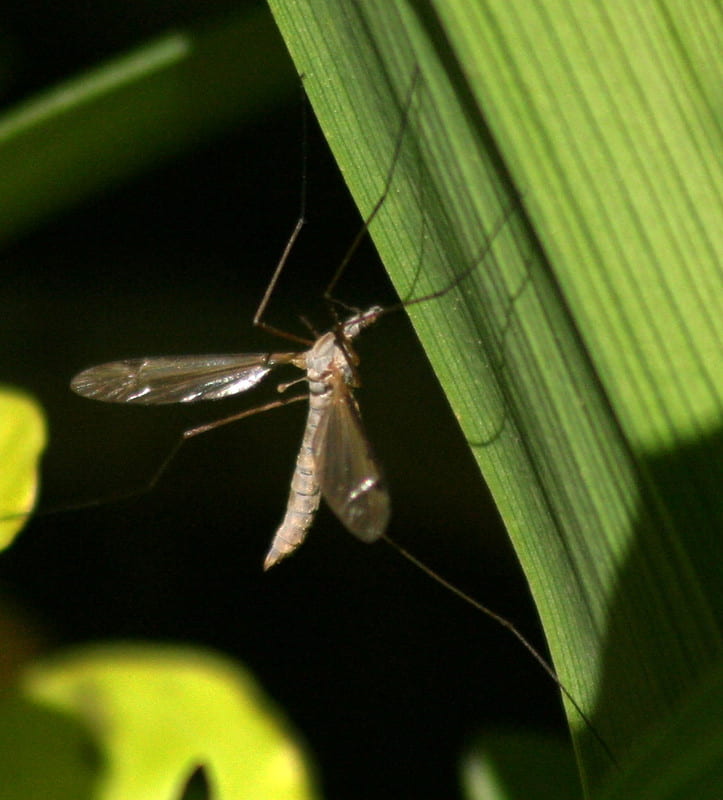Why Do Bug Bites Itch? Entomology Researcher McDermott Weighs in on Summer’s Bane
Insects inject anti-clotting agents to keep blood flowing
By Mary Hightower – July 14, 2021
FAYETTEVILLE, Ark. — Those pink splotches of calamine lotion adorning arms and legs are summer’s badge of honor — showing you’ve been outside and faced down the hordes of midges, mosquitoes and ticks out for your blood.
It’s bad enough that these insects want your blood, but why the maddening itch? Emily McDermott, assistant professor of entomology for the Arkansas Agricultural Experiment Station, the research arm of the University of Arkansas System Division of Agriculture, said it has to do with the human immune system.
“The itchiness is an allergic reaction to insect saliva,” she said. “As an insect or tick is biting, it’s salivating into the wound. It needs to introduce compounds that will keep the blood flowing.”
While the insect tries to draw the blood out, the human body is working to keep it inside.
“The insect’s saliva is combatting platelet aggregation, vessel restriction and clotting,” McDermott said. “That’s what your body is reacting to — trying to defend against foreign compounds.”
Itch vs. scratch
The immune response creates the itch, but does it have any advantage for the one being bitten?
“Itching is kind of a way to protect your body from things. That immediate itch is a ‘get-that-off-me’ response,” McDermott said.
However, that’s not foolproof. In some cases, the body’s itch reaction to a bite may take days or weeks, long after the insect is gone, she said.
However, outside of the initial “shoo” potential, scratching isn’t all that healthy.
“The pain of scratching overrides the itchy sensation,” McDermott said. “It causes the brain to release serotonin, which make the itch more intensive.
“The more you scratch, the more you itch,” she said, which increases the likelihood of tearing the skin.
Over-the-counter remedies like calamine lotion or cortisone-based creams can help dull the itch. McDermott uses an ice cube, with the cold producing “reduced nerve response.”
To learn more about the Division of Agriculture research, visit the Arkansas Agricultural Experiment Station website: https://aaes.uada.edu. Follow us on Twitter at @ArkAgResearch.
To learn about Extension Program in Arkansas, contact your local Cooperative Extension Service agent or visit https://uaex.uada.edu. Follow us on Twitter at @UAEX_edu.
To learn more about the Division of Agriculture, visit https://uada.edu/. Follow us on Twitter at @AgInArk.
About the Division of Agriculture
The University of Arkansas System Division of Agriculture’s mission is to strengthen agriculture, communities, and families by connecting trusted research to the adoption of best practices. Through the Agricultural Experiment Station and the Cooperative Extension Service, the Division of Agriculture conducts research and extension work within the nation’s historic land grant education system.
The Division of Agriculture is one of 20 entities within the University of Arkansas System. It has offices in all 75 counties in Arkansas and faculty on five system campuses.
The University of Arkansas System Division of Agriculture offers all its Extension and Research programs and services without regard to race, color, sex, gender identity, sexual orientation, national origin, religion, age, disability, marital or veteran status, genetic information, or any other legally protected status, and is an Affirmative Action/Equal Opportunity Employer.
Media Contact
Mary Hightower
U of A System Division of Agriculture
(501) 671-2006 | mhightower@uada.edu

Media Contact
Mary Hightower
U of A System Division of Agriculture
(501) 671-2006 | mhightower@uada.edu
